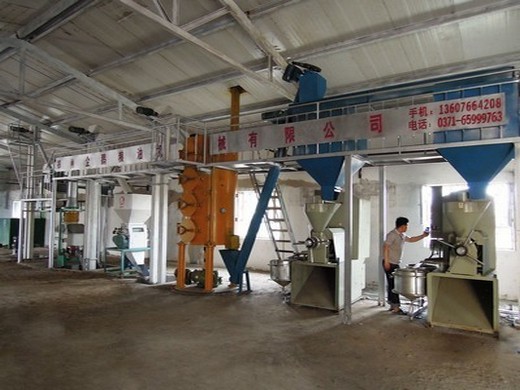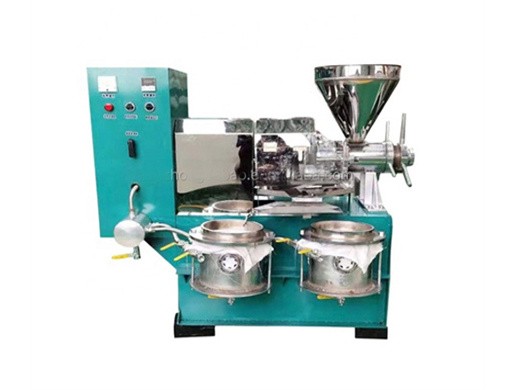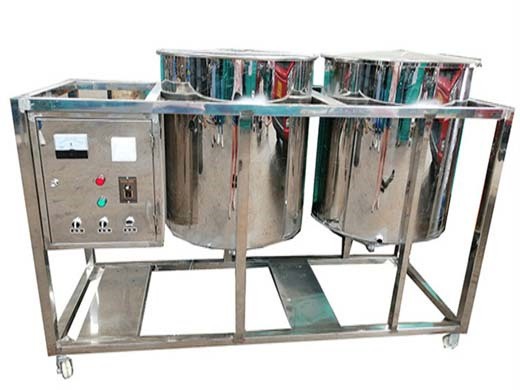Kenya production of biodiesel from rapeseed oil
Production of Biodiesel from Rapeseed Oil
Conventional biodiesel mainly comes from soybean and vegetable oils [2], palm oil [3], sunflower oil [4], rapeseed oil [5] as well as restaurant waste oil [6]. One of the ways is the production
The energy ratio was 2.70 for the rapeseed biodiesel production chain. The specific energy and the energy productivity for rapeseed biodiesel production were calculated as 24.41 MJ/kg and 0.0409 kg/MJ, respectively. The net biodiesel production was 7084.45 MJ/ha, which correspond to 213.39 L biodiesel per hectare of cultivated area.
Production of biodiesel from rapeseed oil
The basic oil for biodiesel production is rapeseed oil which is the third oil produced in the world mainly by US, Malaysia and China [1,3,4,6,7,9]. 2. The technological process of obtaining biodiesel
The energy ratio was 2.70 for the rapeseed biodiesel production chain. The specific energy and the energy productivity for rapeseed biodiesel production were calculated as 24.41 MJ/kg and 0.0409 kg/MJ, respectively. The net biodiesel production was 7084.45 MJ/ha, which correspond to 213.39 L biodiesel per hectare of cultivated area.
Production of biodiesel from rapeseed oil by porcine
PRODUCTION OF BIODIESEL FROM RAPESEED OIL BY ENZYMATIC TRANSESTERIFICATION 217 Europe, the rapeseed is the most common source for the production of biodiesel23,24 which is the third oil produced in the world. Several researchers have investigated biodiesel production from rapeseed oil using lipases25-27.
Highlights Rapeseed oil is converted to biodiesel by various supercritical carboxylate esters. Instead of glycerol, various triacins are formed as the by-product. The highest biodiesel yield is from supercritical methyl acetate treatment. Longer alkyl and/or acyl moieties of carboxylate esters result in lower yield. Mixtures of FAAE and triacin give no negative effects on fuel properties.
Production and Characterization of Biodiesel from
Production and Characterization of Biodiesel from Rapeseed Oil through Optimization of Transesterification Reaction Conditions Momar Talla Dieng1, 2, Takumi Iwanaga1, Yokoyama Christie Yurie1 and Shuichi Torii1 1. Department of Advance Mechanical System Engineering, Kumamoto University, Kurokami, 2-39-1, Kumamoto 860-8555, Japan 2.
A deep eutectic solvent (DES) consisting of choline chloride and glycerol (1:2 molar ratio) was prepared and used as the solvent in CaO-catalyzed transesterification of rapeseed oil to produce biodiesel. In addition to its solvent role, DES activated commercial CaO to be a catalyst for the transesterification reaction. The yield of fatty acid methyl ester (FAME) with the addition of DES
Production of biodiesel through optimized alkaline
Rapeseed oil is the preferred oil stock for biodiesel production because rapeseed produces more oil per unit of land area as compared to other oil sources. It belongs to the Brassicaceae family. Rapeseed is one of the most important oilseeds in the world, ranking fourth with respect to production after soybean, palm and cottonseed [15].
Biodiesel or fatty acids alkyl esters (FAAE) of long chain are an alternative fuel produced by a transesterification process. The potential production of biodiesel from rapeseed oil in Chile is associated to the solution of economic, environmental

Biodiesel and biolubricant production from different
For instance, by using rapeseed (which is an interesting plant for rotation crop as it has a long tap root, showing good yields and resistance) as the basis of a biorefinery (as seen in the literature 18, 20), in this case three main products are found: oil, biodiesel (FAMEs) and biolubricant (fatty acid complex esters).For the first conversion, transesterification with oil and methanol
Get Price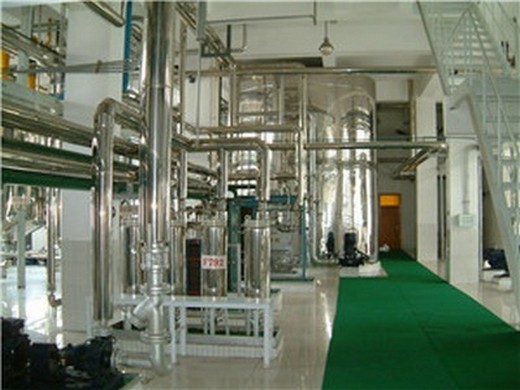
Biodiesel production, properties, and feedstocks
biodiesel is identical to that of the parent oil or fat from which it was produced. A recent report (International Grains Council 2008) indicated that rapeseed oil was the predominant feedstock for worldwide biodiesel production in 2007 (48%, 4.6 million metric tons, MMT). The remaining oils included soybean (22%, 2.1 MMT) and palm (11%, 1.0
Get Price
Chapter 2 Introduction to Biodiesel Production
2.2.1 Typical Oil Crops Useful for Biodiesel Production The main characteristics of typical oil crops that have been found useful for biodiesel production are summarized in the following paragraphs [6–10]. 2.2.1.1 Rapeseed and Canola Rapeseed adapts well to
Get Price
Jatropha curcas biodiesel production in Kenya
that the production of jatropha as a biodiesel feedstock has been widely promoted by private enterprises, non-governmental organizations and overseas development assistance agencies working in Africa, including Kenya. Jatropha production has been promoted for its perceived economic and ecological advantages.
Get Price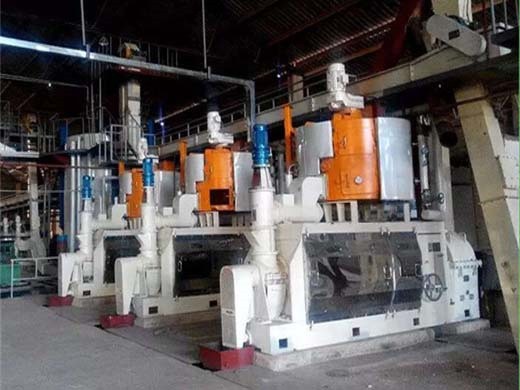
Rapeseed
Rapeseed is grown for the production of animal feed, edible vegetable oils, and biodiesel.Rapeseed was the third-leading source of vegetable oil in the world in 2000, after soybean and palm oil. It is the world's second-leading source of protein meal after soybean.. Animal feed. Processing of rapeseed for oil production produces rapeseed meal as a byproduct.
Get Price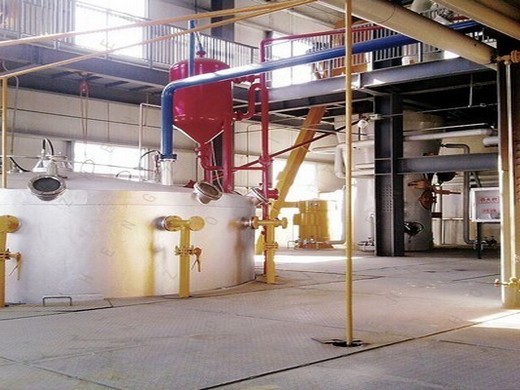
Production of biodiesel from rapeseed oil by porcine
PRODUCTION OF BIODIESEL FROM RAPESEED OIL BY ENZYMATIC TRANSESTERIFICATION 217 Europe, the rapeseed is the most common source for the production of biodiesel23,24 which is the third oil produced in the world. Several researchers have investigated biodiesel production from rapeseed oil using lipases25-27.
Get Price
Widely used catalysts in biodiesel production: a review
Kenya Castor oil Mali Jatropha oil UK Rapeseed/waste cooking oil Ireland Frying oil/animal fat Canada Rapeseed/animal fat/soybean oil Mexico Animal fat/waste oil rapeseed oil in biodiesel production decreased from 72% in 2008. To reduce our dependency on edible oil and reduce the
Get Price
Production and Characterization of Biodiesel from
Production and Characterization of Biodiesel from Rapeseed Oil through Optimization of Transesterification Reaction Conditions Momar Talla Dieng1, 2, Takumi Iwanaga1, Yokoyama Christie Yurie1 and Shuichi Torii1 1. Department of Advance Mechanical System Engineering, Kumamoto University, Kurokami, 2-39-1, Kumamoto 860-8555, Japan 2.
Get Price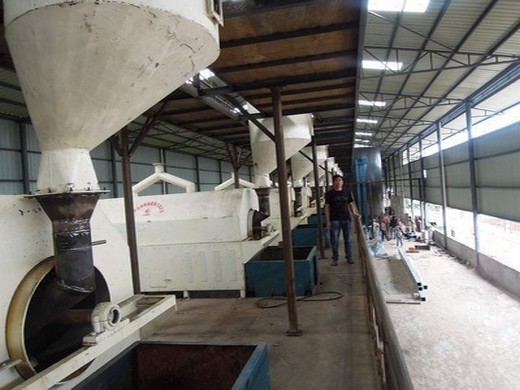
Activation of Commercial CaO for Biodiesel Production
A deep eutectic solvent (DES) consisting of choline chloride and glycerol (1:2 molar ratio) was prepared and used as the solvent in CaO-catalyzed transesterification of rapeseed oil to produce biodiesel. In addition to its solvent role, DES activated commercial CaO to be a catalyst for the transesterification reaction. The yield of fatty acid methyl ester (FAME) with the addition of DES
Get Price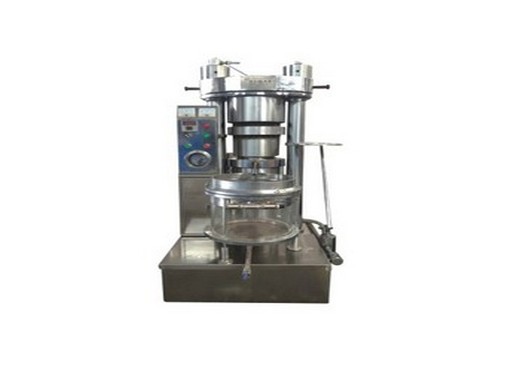
Biodiesel Production From Rapeseed Oil With Waste
Biodiesel or fatty acids alkyl esters (FAAE) of long chain are an alternative fuel produced by a transesterification process. The potential production of biodiesel from rapeseed oil in Chile is associated to the solution of economic, environmental
Get Price
Biodiesel production by interesterification of rapeseed
An alternative method for the biodiesel or fatty acid alkyl ester (FAAE) synthesis has been proposed—rapeseed oil interesterification with methyl formate. Reaction with methyl formate proceeds at a relatively low temperature (28 °C) instead of 55–65 °C necessary for triglyceride reactions with methanol and other monoesters. Similarly to transesterification with methanol, the product
Get Price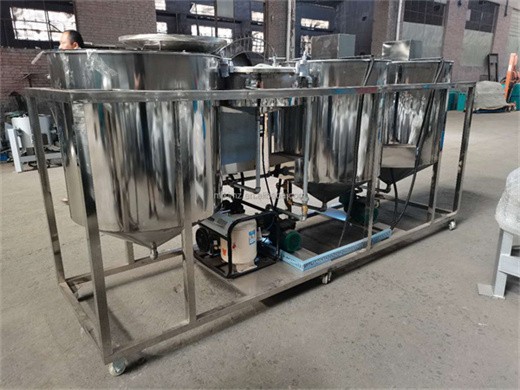
Fast Rate Production of Biodiesel from Neem Seed Oil Using
Abstract. Biodiesel is a possible remedy to the present toxic, finite sources and ever-diminishing crude fuels. Nonedible and locally available (Azadirachta indica) neem seed oil (NSO) as a second-generation feedstock was transformed into biodiesel using calcined banana ash (CBA) derived from banana peels blended with lithium calcium oxide iron (III) sulphate Li-CaO/Fe 2 (SO 4) 3 catalyzed
Get Price
Biodiesel production, properties, and feedstocks
biodiesel is identical to that of the parent oil or fat from which it was produced. A recent report (International Grains Council 2008) indicated that rapeseed oil was the predominant feedstock for worldwide biodiesel production in 2007 (48%, 4.6 million metric tons, MMT). The remaining oils included soybean (22%, 2.1 MMT) and palm (11%, 1.0
Get Price
Biodiesel Production by Methanolysis of Rapeseed Oil
Abstract—The aim of this research work was the production of biodiesel from rapeseed oil methanolysis, by using Li impregnated ZnO as an heterogeneous catalyst. With the aim of determining the optimum conditions of the process, the influence
Get Price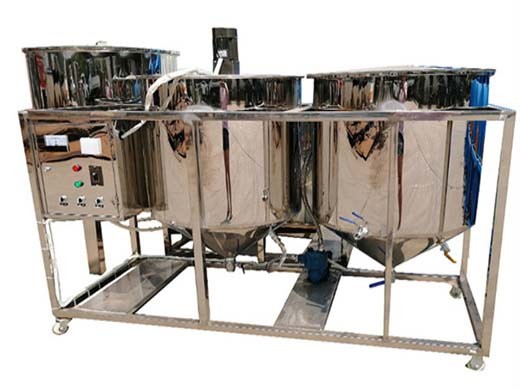
Production of biodiesel and lactic acid from rapeseed oil
Production of biodiesel and lactic acid from rapeseed oil using sodium silicate as catalyst Yun-Duo Longa,b, Feng Guoa, Zhen Fanga,⇑, Xiao-Fei Tiana, Li-Qun Jianga, Fan Zhanga a Biomass Group, Laboratory of Tropical Plant Resource Science, Xishuangbanna Tropical Botanical Garden, Chinese Academy of Sciences, 88 Xuefu Road, Kunming, Yunnan Province 650223, China
Get Price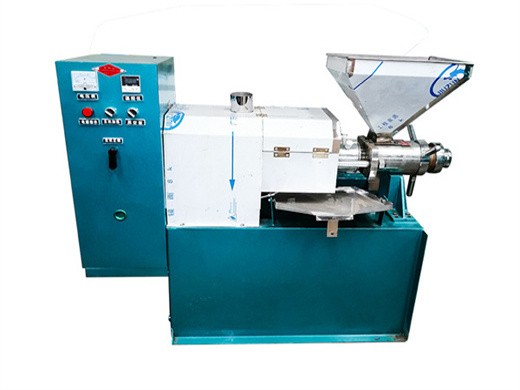
Jatropha curcas biodiesel production in Kenya
that the production of jatropha as a biodiesel feedstock has been widely promoted by private enterprises, non-governmental organizations and overseas development assistance agencies working in Africa, including Kenya. Jatropha production has been promoted for its perceived economic and ecological advantages.
Get Price
Production of biodiesel from rapeseed oil by porcine
PRODUCTION OF BIODIESEL FROM RAPESEED OIL BY ENZYMATIC TRANSESTERIFICATION 217 Europe, the rapeseed is the most common source for the production of biodiesel23,24 which is the third oil produced in the world. Several researchers have investigated biodiesel production from rapeseed oil using lipases25-27.
Get Price
Production of biodiesel and lactic acid from rapeseed oil
Biodiesel and lactic acid from rapeseed oil was produced using sodium silicate as catalyst. The transesterification in the presence of the catalyst proceeded with a maximum yield of 99.6% under optimized conditions [3% (w/w) sodium silicate, methanol/oil molar ratio 9/1, reaction time 60 min, reaction temperature 60°C, and stirring rate 250 rpm].
Get Price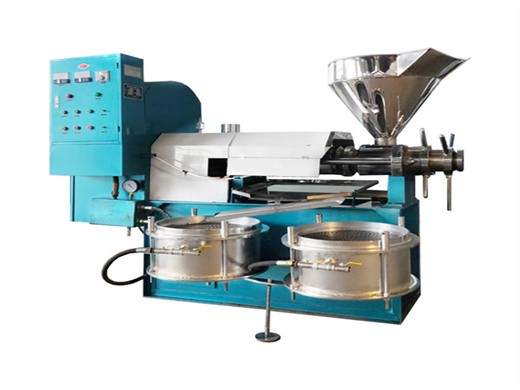
Biodiesel Production by Methanolysis of Rapeseed Oil
Abstract—The aim of this research work was the production of biodiesel from rapeseed oil methanolysis, by using Li impregnated ZnO as an heterogeneous catalyst. With the aim of determining the optimum conditions of the process, the
Get Price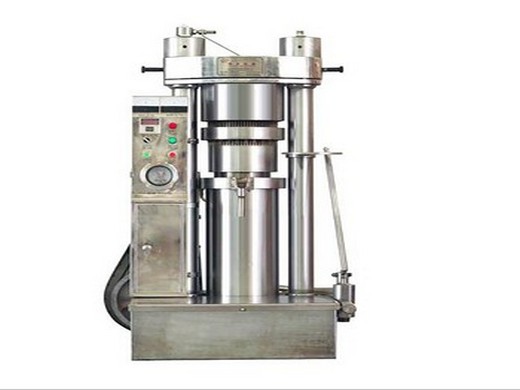
Widely used catalysts in biodiesel production: a review
Kenya Castor oil Mali Jatropha oil UK Rapeseed/waste cooking oil Ireland Frying oil/animal fat Canada Rapeseed/animal fat/soybean oil Mexico Animal fat/waste oil rapeseed oil in biodiesel production decreased from 72% in 2008. To reduce our dependency on edible oil and reduce the
Get Price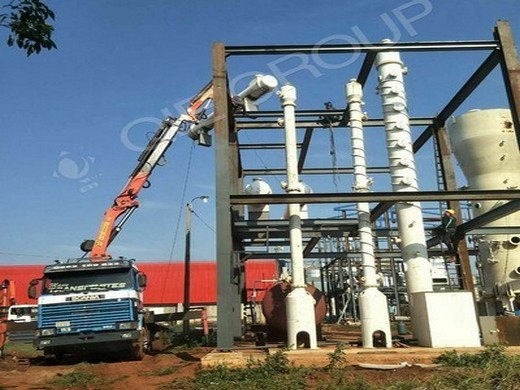
Production of biodiesel and lactic acid from rapeseed oil
Production of biodiesel and lactic acid from rapeseed oil using sodium silicate as catalyst Yun-Duo Longa,b, Feng Guoa, Zhen Fanga,⇑, Xiao-Fei Tiana, Li-Qun Jianga, Fan Zhanga a Biomass Group, Laboratory of Tropical Plant Resource Science, Xishuangbanna Tropical Botanical Garden, Chinese Academy of Sciences, 88 Xuefu Road, Kunming, Yunnan Province 650223, China
Get Price
Biodiesel production by interesterification of rapeseed
An alternative method for the biodiesel or fatty acid alkyl ester (FAAE) synthesis has been proposed—rapeseed oil interesterification with methyl formate. Reaction with methyl formate proceeds at a relatively low temperature (28 °C) instead of 55–65 °C necessary for triglyceride reactions with methanol and other monoesters. Similarly to transesterification with methanol, the product
Get Price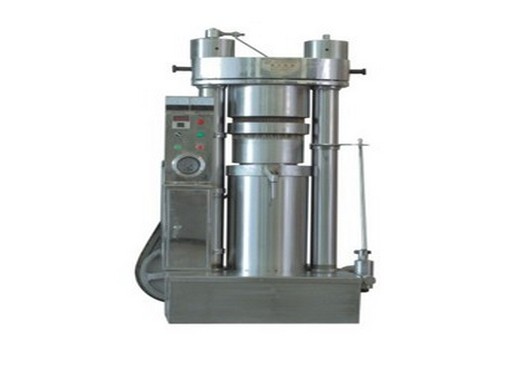
The influence of blending process on the quality of
100% rapeseed biodiesel: 0.0% used cooking biodiesel; 25% rapeseed biodiesel: 75 % used cooking biodiesel; 50 rapeseed biodiesel: 50% used cooking biodiesel; and 0.0% rapeseed biodiesel: 100% used cooking biodiesel. Biodiesel produced from rapeseed oil was chosen as a base for mixing with biodiesel from used cooking oil due to it having some
Get Price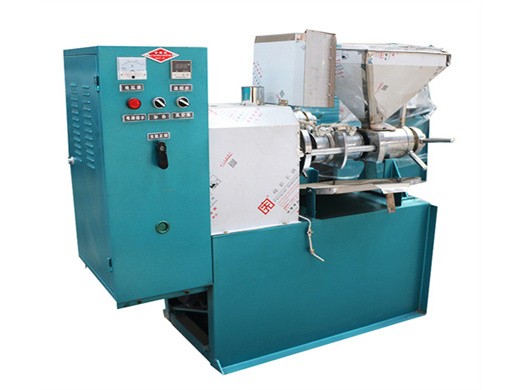
Biodiesel International Renewable Energy Agency
Between 2005 and 2012 feedstock costs for biodiesel increased by 87% for soybean and 49% for rapeseed oil, with average production costs estimated at USD 1.3/litre of diesel equivalent in 2012. Biodiesel produced from palm oil in Malaysia and Indonesia was estimated to have lower production costs, at around USD 1/litre.
Get Price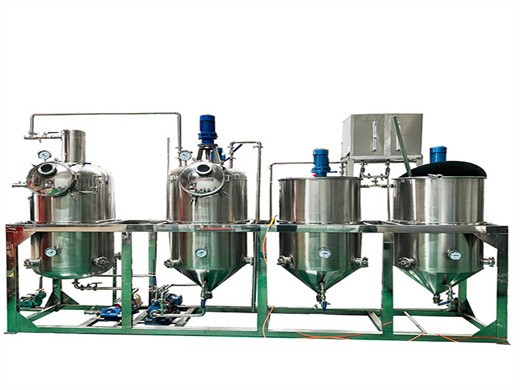
Rapeseed biodiesel may not qualify as a sustainable fuel
Aug 13, 2012· The RED states that across the whole production chain rapeseed oil biodiesel gives a typical saving of 45 percent, or a lower default value of 38
Get Price

